Recently a friend was having a professional home energy audit performed, and I asked to tag along. I was curious to learn what tools and techniques a professional uses to analyze the efficiency of a home. I also wanted to learn what actions an auditor would recommend. The audit was performed by James from Energy Services Group, a local business specializing in residential energy conservation since 1981.
If you live in central Maryland, Baltimore Gas & Electric (BGE) is probably your energy provider. The state of Maryland requires BGE (and other providers) to develop energy efficiency programs with the goal to reduce electric consumption by 15% by the year 2015. Examine your monthly bill next time and look for the EmPower Md. Charge. That fee funds the programs and enables BGE customers to take advantage of services like the Home Performance Energy Audit at a fraction of the cost. According to the BGE website, the Home Performance Energy Audit costs $100, and it’s a $400 value. Furthermore, a number of home improvements quality for rebates through the BGE Smart Energy Savers Program.
My friend’s home energy audit began with simple information gathering. James toured the house, examining the interior and exterior and noting the various appliances and utilities. He mapped out the house and measured the volume of each room. My friend also provided 12 months of utility bills.
Image may be NSFW.
Clik here to view.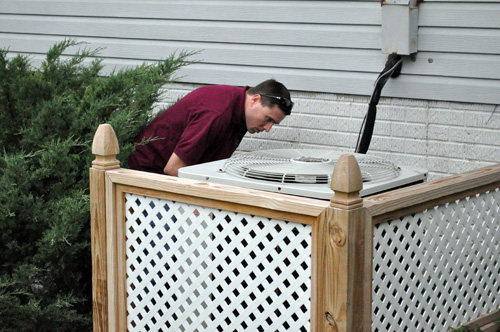
Image may be NSFW.
Clik here to view.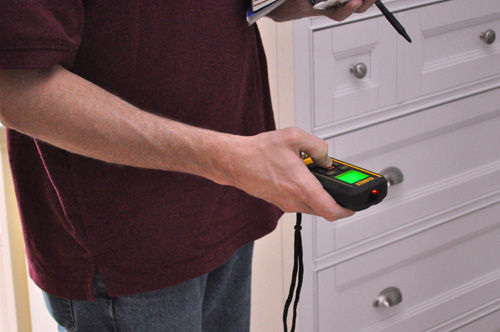
Home Energy Audit: The Attic
The attic and basement are where home energy auditors find the majority of problems, and James started in the attic. He quickly identified a section of fiberglass insulation that was all black. Homeowners commonly think the insulation has mold growing on it. However, that was not the case. The insulation was discolored from dirt as air continuously passed through it (much like a furnace filter). This was a great indicator of where air was infiltrating the house from the attic.
Pro-Tip: Attic fans are an active way to cycle air through an attic. James likes to recommend passive approaches like ensuring soffits and the ridge vent are clear because passive methods create fewer points of failure.
Image may be NSFW.
Clik here to view.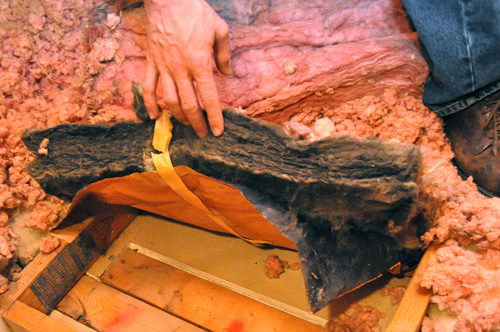
My friend’s attic had the right amount of insulation. Unfortunately, in a few places it wasn’t against the structure and therefore not actually insulating anything. James also suggested using weather-stripping and 6″ of rigid foam board to insulate the attic access panel.
Image may be NSFW.
Clik here to view.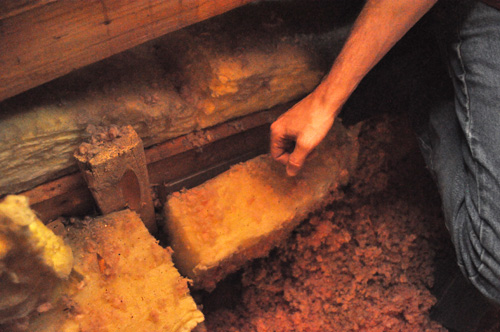
Pro-Tip: If you’re planning on making the attic a living space or have a significant number of utilities running through the attic, consider a hot roof to incorporate the attic into the conditioned space.
Image may be NSFW.
Clik here to view.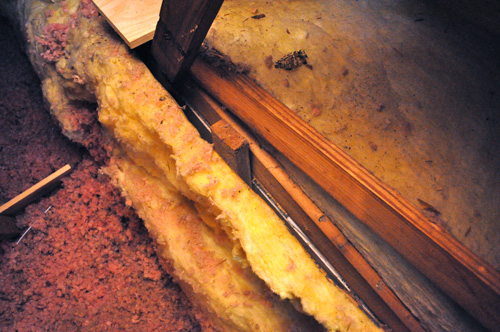
Home Energy Audit: The Basement
Next, James went to the basement, and he insulated the hot and cold water pipes.
Pro-Tip: The 2012 International Energy Conservation Code (IECC) section R403.3 requires a minimum of R-3 on piping carrying fluids above 105°F (41°C) or below 55°F (13°C). See the Related Content section for a link to the free, online IECC.
Image may be NSFW.
Clik here to view.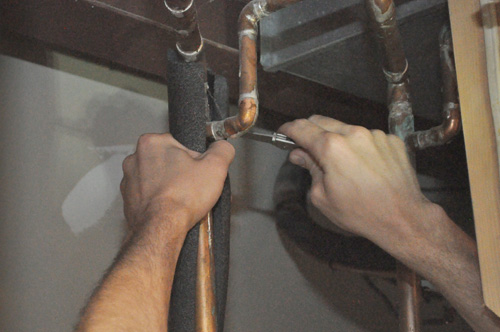
My friend had previously insulated a portion of his band boards, and James recommended finishing the job. James suggested cutting rigid foam board to fit against the band board and sealing the edges with Great Stuff.
Image may be NSFW.
Clik here to view.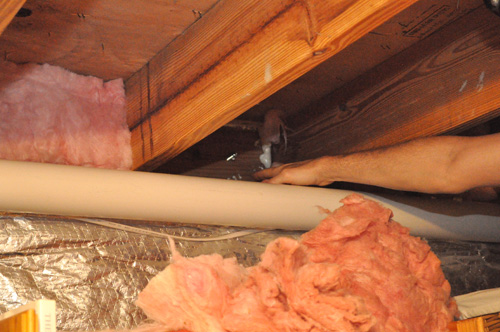
James checked the gas lines for any leaks, and he analyzed the ambient CO levels around the HVAC unit and gas range in the kitchen.
Image may be NSFW.
Clik here to view.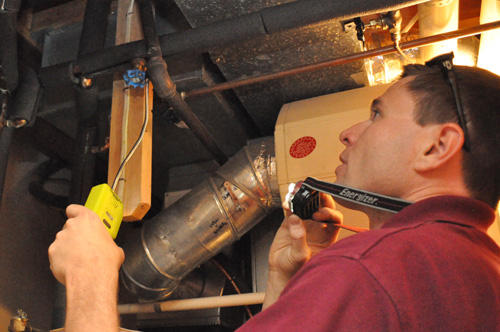
Image may be NSFW.
Clik here to view.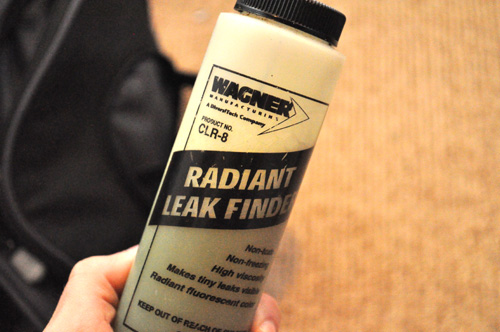
James also ran a Worst-Case Depressurization test to verify combustion safety. Basically, James was measuring the amount of negative pressure with all the exhaust fans (kitchen hood, bathroom vent fans, dryer, etc.) running to see if it was enough to create a backdraft.
Image may be NSFW.
Clik here to view.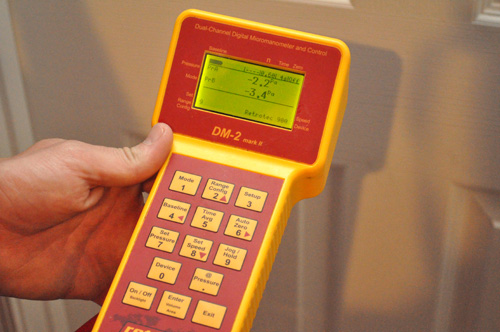
James also analyzed the amount of carbon monoxide exhausted by the furnace. High levels of CO indicate poor combustion and low efficiency and vice versa.
Pro-Tip: James recommends a CO detector on every level of the house.
Image may be NSFW.
Clik here to view.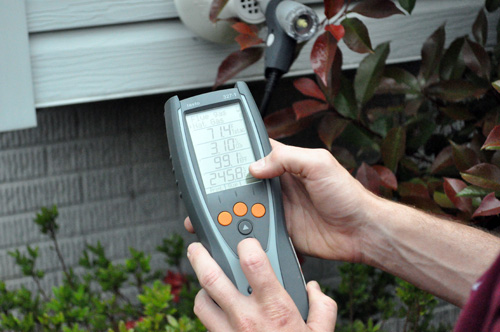
Home Energy Audit: Blower Door Test
Lastly, James performed a blower door test, and these are very helpful to determine air leakage.
Image may be NSFW.
Clik here to view.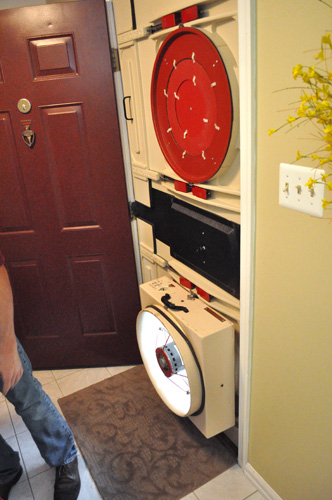
James setup all the equipment in the main entry door and used the fan to create a negative pressure.
Image may be NSFW.
Clik here to view.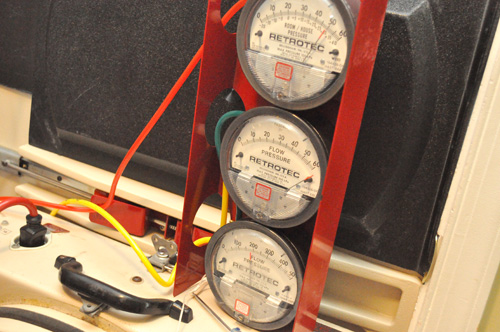
Next, we walked the house finding air leaks. The most common culprits included around switch and outlet boxes, ductwork junctions, attic access and doors. It was amazing how easy it was to feel the air coming through.
Pro-Tip: Rather than address air infiltration around electrical boxes, James suggests stopping it at the source by sealing the top plate of the wall framing.
Image may be NSFW.
Clik here to view.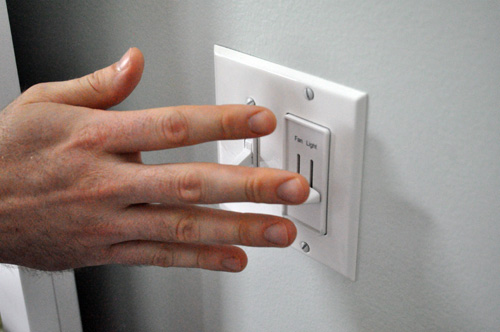
We could feel air moving at the junction between the ductwork and the floor (not through the ductwork), drawing unconditioned air from the space below.
Image may be NSFW.
Clik here to view.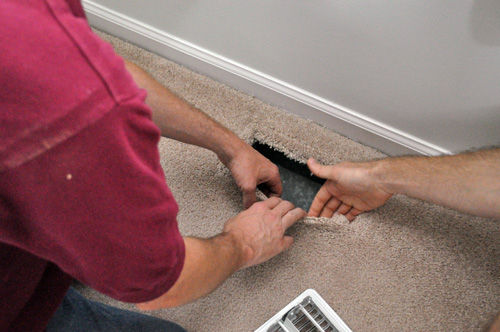
Much like the insulation in the attic, some carpets build up dirt adjacent to the wall from “filtering” the air as it moves though. I was surprised to find how leaky the wall was around the bottom plate.
Image may be NSFW.
Clik here to view.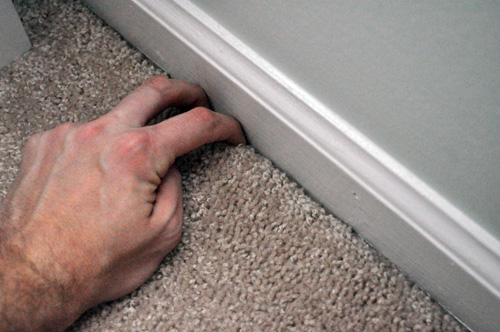
Another surprise was the amount of air moving through this door latch. Air must be traveling through the top plate, wall framing and out through the strike plate.
Image may be NSFW.
Clik here to view.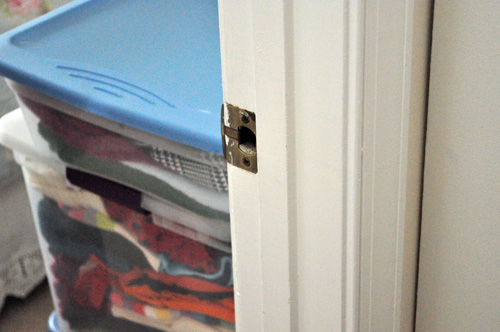
James paid special attention to the door leading to the garage because that’s often a source of VOC’s and other potentially harmful gases.
Image may be NSFW.
Clik here to view.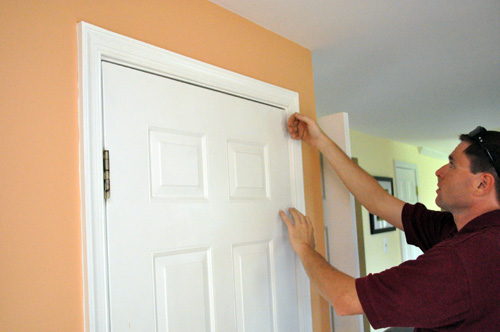
James performed some other miscellaneous tasks like installing CFL bulbs and faucet aerators. Normally James would examine the insulation with a thermal imager. Unfortunately, here in Maryland the outdoor and indoor temperature are about the same right now so he omitted that step. Altogether it was a very educational audit. It let my friend know exactly where air was entering the house and the best way to address the problems.